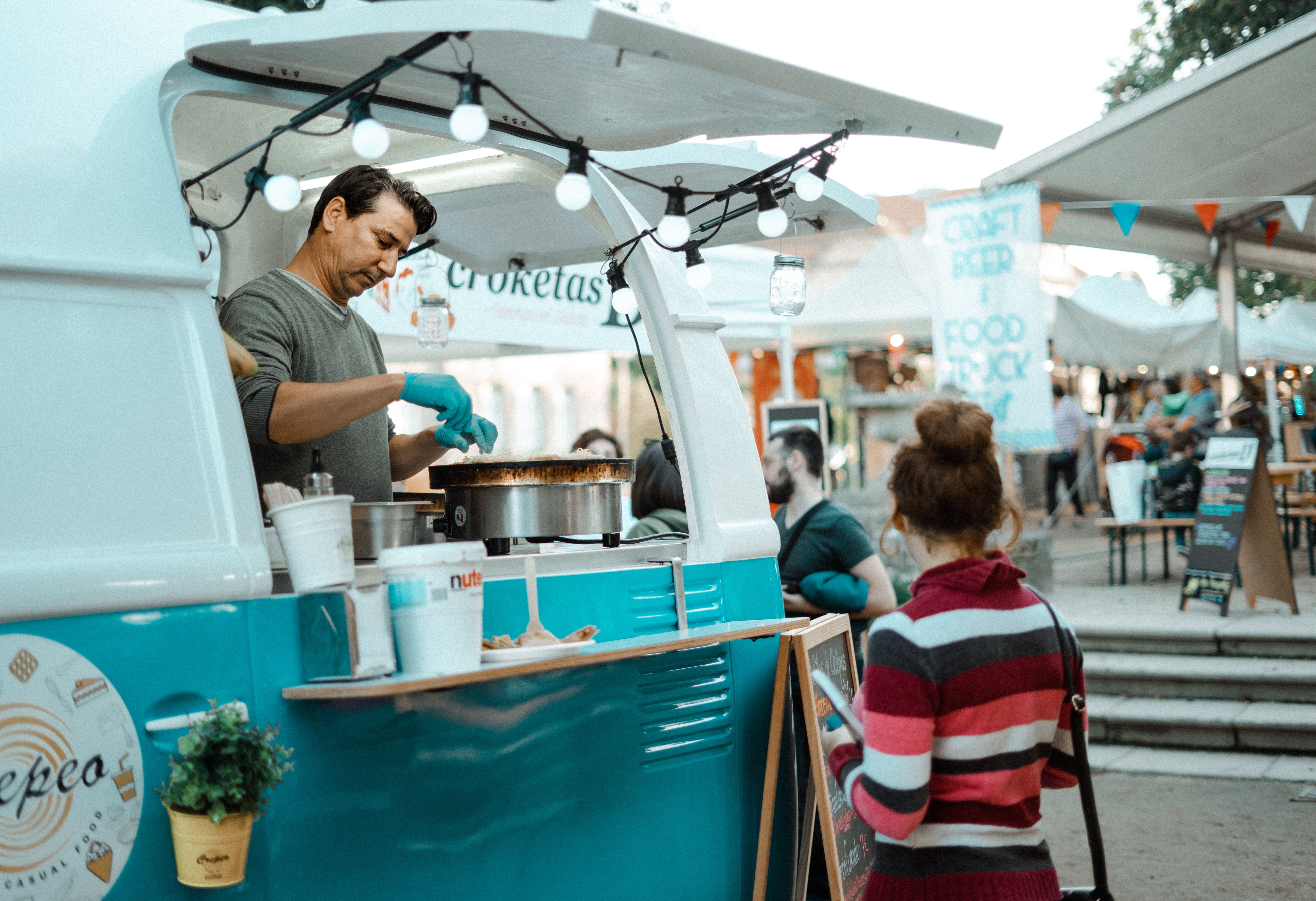Food Culture In The After Times Won't Be The Same, And That's Good
Quarantine got a lot better when the food trucks came.
Before the pandemic, food trucks made the bulk of their money selling lunch to office workers. Gathered in high rises and suburban corporate office parks, the trucks could reach thousands of customers a day. But when everyone went home during lockdown, food trucks suddenly had no customers.
"So they very quickly pivoted to neighborhoods," says Matt Geller, CEO of the National Food Truck Association.
Geller made an app, Best Food Trucks, that connects food trucks with people who want them to come to their block and save them from having to cook — again. In the early months of lockdown, these residential area visits gave food truck owners a way to reach new customers.
And it gave the customers a way to have a safe, social, going-out-to-eat-adjacent experience.
"People were craving that tiny bit of social interaction that you have if you happen to walk up to the truck at the same time as your neighbor," Geller says. "'Hey, man, this sucks, but at least we have a food truck.' It's a touch of normalcy in a really tough time."
As a post-quarantine world emerges and people head back to indoor dining, Geller doesn't suspect food truck enthusiasm to wane.
"A lot of the smaller markets that have been a little tougher from a regulation standpoint relaxed regulations so people could have food trucks in their neighborhoods," he says. "I don't see that genie going back into the bottle."
The food truck migration is one example of how the restaurant industry pivoted during quarantine — and how many of those pivots might become permanent.
The change started with the industry and customers alike rethinking their relationship to traditional restaurants.
"The pandemic has forced us to re-conceptualize what a restaurant is at its root. Is it a place where we eat? Or is the essence of the restaurant in the kitchen?" says Kate MacDonnell, who keeps tabs on food industry trends in her role as CMO of Coffee Affection, a coffee collective. "It's seeming more and more like the true identity of a restaurant is in its kitchen."
The overhead costs that were challenging for restaurants in the before times became almost insurmountable during lockdown. Many restaurants saved money by evolving into "cloud" or "ghost" kitchens — restaurants that are kitchen-only, offering take-out or delivery, often as pop-ups or in shared spaces.
"[Cloud kitchens] have a lot of perks: cheaper rent, a more consolidated work-space, and getting more people involved in the end product," MacDonnell says.
Dan Unter, who created Kitch, a platform that helps restaurateurs create ghost kitchens and connect to chefs who need them, saw cooks and restaurant owners alike flock to the platform last year.
"The idea of a ghost kitchen was not new. The pandemic has accelerated awareness of it," Unter says. "[Ghost kitchens allow] food businesses to enter new markets economically and quickly — test out menus, labor, supply, and product/market fit with little leverage."
Cloud kitchens can be streamlined faster than ever thanks to solutions like Square Online. They can easily create their website, ordering page, and provide different fulfillment methods (pick up, courier delivery or delivery with their own staff). Other technologies have helped restaurateurs innovate in ways that are good for diners, too. Square Self Serve Ordering lets diners scan a QR code and pay while dining in, and Square On-Demand Delivery offers courier services to deliver to diners, without charging restaurants any marketplace commissions.
Food halls — a food trend that was gaining steam in the before times — are on the comeback as many re-open or debut brand new, massive spaces.
A food hall in Delray Beach, Fla., will be one of the largest in the country, at 150,000 square feet, when it opens this spring. Washington, D.C., is home to a virtual food hall — the best of both worlds. You can order anything from ramen to coffee, pizza to ice cream for dine-in, delivery or takeout (and then eat it all outside in a year-round, heated, waterfall-containing garden).
The Time Out Market in Miami Beach, Fla., closed during lockdown but is reopening soon, offering chefs the chance to sidestep the high costs of running a traditional restaurant.
Hawaii-style comfort food spot Hapa Kitchen and Eatery developed their restaurant concept during lockdown, and will be in the Time Out Market when it reopens.
"Opening in Time Out Market instead of an actual brick and mortar on our own has allowed us to bring the concept to life faster than we imagined," says owner Neil Sullivan. "Expenses are lower. In turn, this allows us to become profitable sooner."
Experts think that all these new technologies — and our new definition of what a restaurant really means — will result in a more creative post-pandemic food industry.
"[Post-quarantine] will bring about lots of activity in the food world," Unter says. "And with new tools at their disposal, restaurants, caterers and everyone else will have new opportunities to spread their wings."
Which, if you love food, means more wings for you.
Marla Caceres is a freelance writer for G/O Media Studios.
This post is a sponsored collaboration between Square and G/O Media Studios.
